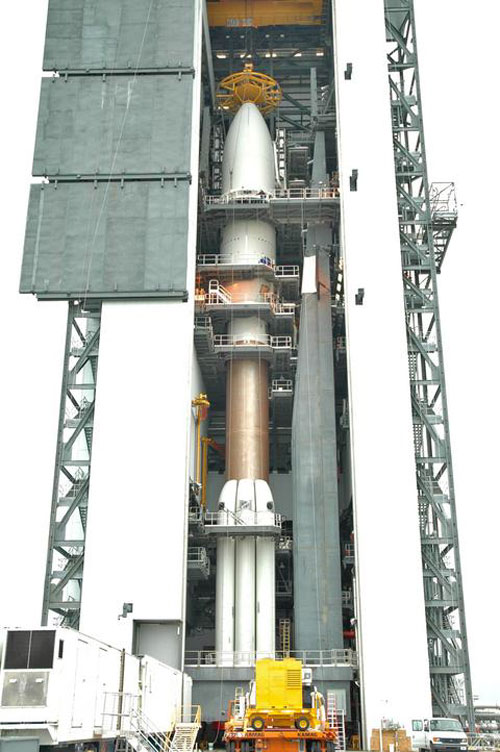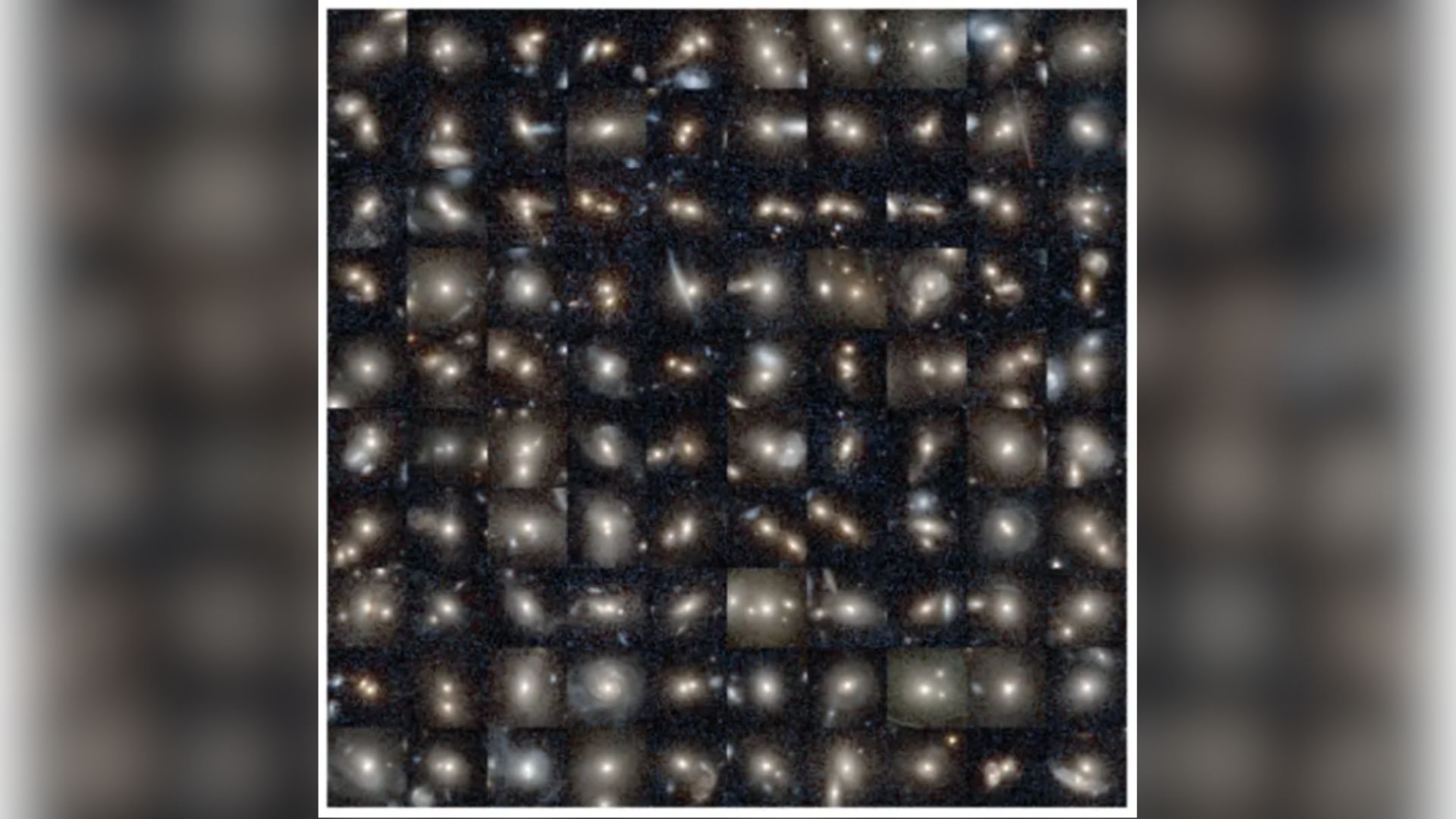NASA's New Horizons Pluto Probe Ready for Launch

NASA'sfirst spacecraft aimed at the edge of our solar system is ready for its morethan nine-year trek to the planet Pluto and beyond, mission managers saidSunday.
Thespacecraft, dubbed NewHorizons, is set to launch spaceward atop a Lockheed Martin-built Atlas 5rocket on Jan. 17, beginning a spaceflight that will stretch more than nineyears to reach a planet 3.06 billion miles (4.92 billion kilometers) fromEarth.
"I like tocall this mission the Everest of planetary exploration," said New Horizonsprincipal investigator Alan Stern, of the Southwest Research Institute (SwRI),Sunday during a prelaunch press briefing at NASA's Kennedy Space Center in CapeCanaveral, Florida. "It's really fantastic."
NewHorizons is set to launch Tuesday from Complex 41 at Cape Canaveral Air ForceStation during a nearly two-hour window that opens at 1:24 p.m. EST (1823 GMT).The McLean, Virginia-based firm International Launch Services is overseeing thespace shot. The New Horizons spacecraft and its booster are set to roll out tothe launch pad on Monday.
"It's thefastest spacecraft ever launched," Colleen Hartman, NASA's deputy associateadministrator for science mission directorate, said of New Horizons during thebriefing. "It will get to the Moon in nine hours...it will get to Jupiter in oneyear and nine months."
It tookNASA's Apollo astronauts three days to reach the Moon in the 1960s and 1970s aboardtheir spacecraft, while the Cassini probe took four years to swing pastJupiter, Hartman added.
But NewHorizons has more on its plate than merely speeding through the solar system.
Breaking space news, the latest updates on rocket launches, skywatching events and more!
Thespacecraft is the first to reach out toward Pluto, its moon Charon and two otherobjects thought to be additional satellites. After flying past theplanetary system at more than 31,000 miles an hour (49,889 kilometers an hour,researchers hope the probe will be able to visit at least one other icy object inPluto's vicinity - a region dubbed the KuiperBelt - though that phase of the $700 million spaceflight will depend onwhether the New Horizons mission is extended, mission scientists said.
"Pluto isjust the brightest of the many objects in the Kuiper Belt," Stern said. "It's afossil relic of the formation of our solar system."
With itstiny size and eccentric orbit, Pluto was once thought to be a planetary misfitin our solar system. But the discovery of several other objects beyond Pluto'sorbit - including a potential10th planet - has forced a review of that belief, researcherssaid.
"We know of17 objects that could be called planets, most of which are ice dwarfs," Sternsaid, adding that the number is based on objects found large enough for theirgravity to coalesce surrounding material into spherical shapes. "So Pluto istypical of what is probably the most populous type of planet in our solarsystem. It probably mimics other Kuiper Belt objects."
Researchershope New Horizons will shed light on Pluto's ethereal atmosphere, which theplanet appears to shed almost like a comet as it moves through space. Duringthe probe's flyby, it is also expected to build detailed maps of Pluto'ssurface, photograph Charon and hopefully photograph the other two moons -currently dubbed P1 and P2 - discovered last fall in Hubble Space Telescope images.
"We'llbasically be able to map the entire [planet]," Dale Cruikshank, a New Horizonsscience team co-investigator from NASA's Ames Research Center in Moffet Field,California, told reporters.
The NewHorizons spacecraft is about the size of a piano and weighs about 1,054 pounds(478 kilograms). It carries seven primary instruments, including several cameras,plasma detectors and other tools to study Pluto.
NewHorizons is also NASA's first planetary probe to carry a student-built instrument.Built by engineering students at the University of Colorado, the spacecraft'sStudent Dust Counter designed to detect tiny dust particles throughout thenine-year trek to Pluto, researchers said.
NASAofficials said Pluto is the only planet ever discoveredin the 20th century, as well as by a U.S. citizen, marking the firstof many bodies later found the Kuiper Belt.
AstronomerClyde Tombaugh discovered the distant world in 1930 using a telescope at theLowell Observatory in Flagstaff, Arizona. While the astronomer died in 1997, Tombaugh'sfamily - his wife Patsy and two grown children - will be on hand for theupcoming launch, mission researchers said.
"We thankthem for being here with us," Stern said.
Whileresearchers will have to wait more than nine years after New Horizons' launchto get their first close look at Pluto, they have some good ideas of what theymight see.
Images of Neptune'smoon Triton- from NASA's Voyager 2 spacecraft - and Saturn's satellite Enceladus- taken by the Cassiniprobe - have hinted at some geological activity that New Horizons couldfind at Pluto, according to Cruikshank.
"There maybe geysers, there may be jets of material," Cruikshank said. "There may even beevidence of cracking on the surface."
Stern hassaid it may even be possible that Pluto sports its own ring system made up ofmaterial cast off from previous impacts.
"We have abody of information as to what we'll find in the outer solar system,"Cruikshank said. "But we're certainly prepared to be surprised."
- NASA's Pluto Probe Set for Flight
- For Scientist and Englishwoman, Pluto Mission is Precious
- Reaching for the Edge: New Horizons Spacecraft Bound for Pluto

Tariq is the award-winning Editor-in-Chief of Space.com and joined the team in 2001. He covers human spaceflight, as well as skywatching and entertainment. He became Space.com's Editor-in-Chief in 2019. Before joining Space.com, Tariq was a staff reporter for The Los Angeles Times covering education and city beats in La Habra, Fullerton and Huntington Beach. He's a recipient of the 2022 Harry Kolcum Award for excellence in space reporting and the 2025 Space Pioneer Award from the National Space Society. He is an Eagle Scout and Space Camp alum with journalism degrees from the USC and NYU. You can find Tariq at Space.com and as the co-host to the This Week In Space podcast on the TWiT network. To see his latest project, you can follow Tariq on Twitter @tariqjmalik.
